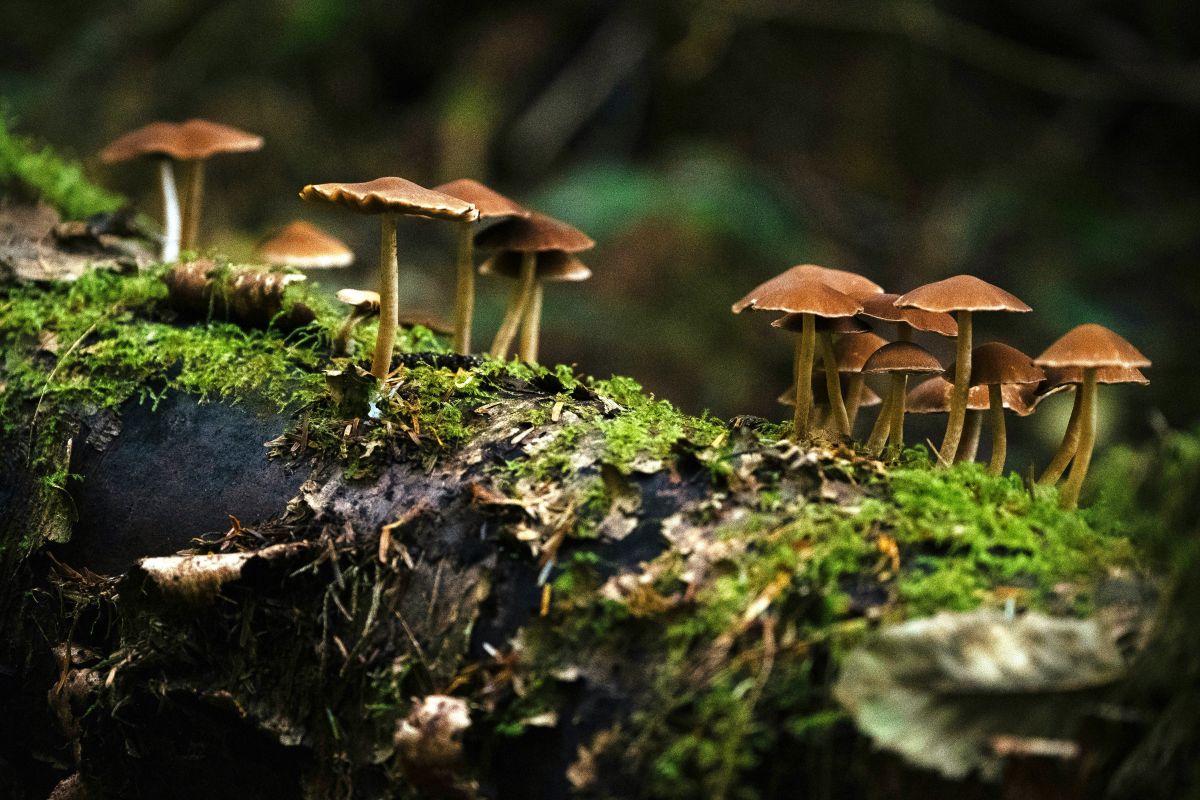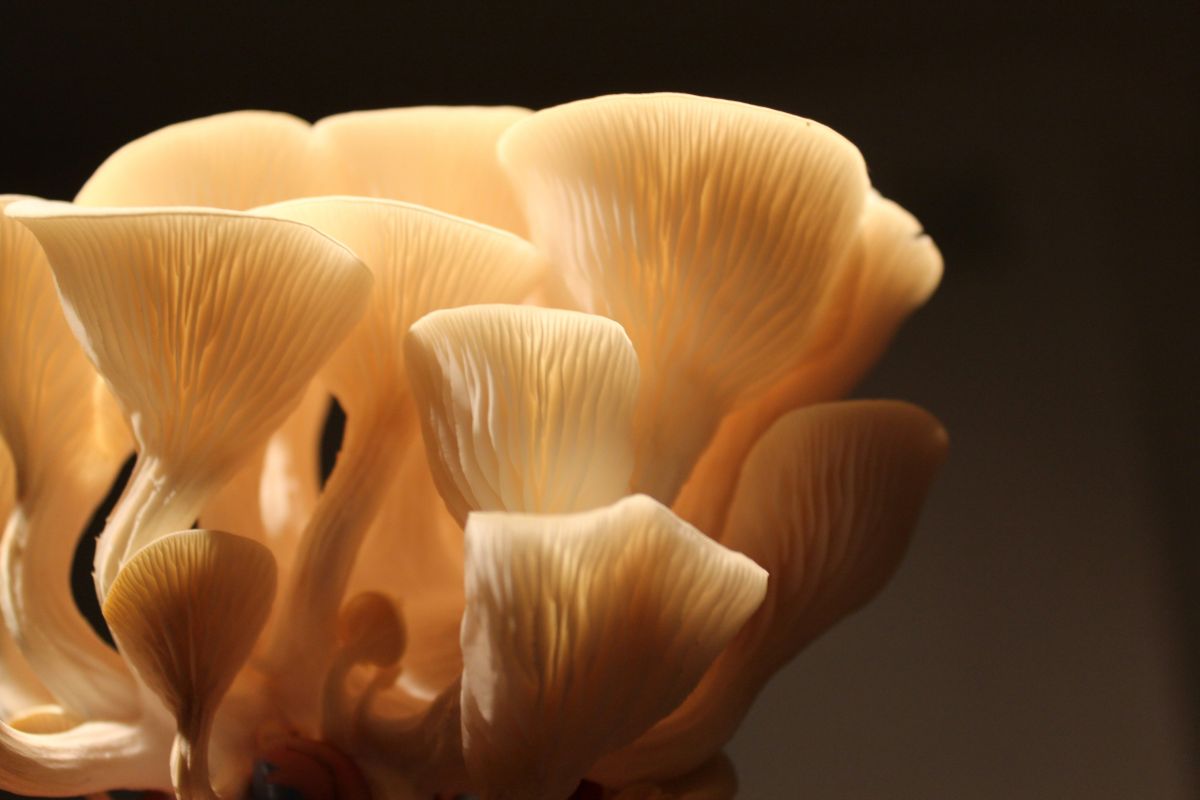
HUN-REN researchers and collaborators use genetic “swaps” to recalibrate the fungal tree of life, revealing a deep history that predates the first land plants.
The Five Paths to a Complex World
On a planet once dominated by single-celled organisms, a revolutionary change occurred not once, but at least five separate times: the evolution of complex multicellular life. This was not simply a matter of cells clumping together; it was the dawn of organisms where cells took on specialized jobs and were organized into distinct tissues and organs, much like in our own bodies. This leap required sophisticated new tools, including highly developed mechanisms for cells to adhere to one another and intricate systems for them to communicate across the organism. This profound evolutionary innovation arose independently in five major groups: animals, land plants, fungi, and two distinct lineages of algae (red and brown algae).1 Understanding when each of these groups emerged is fundamental to piecing together the history of life on Earth.
A Timeline Written in Stone
For most of these groups, the fossil record acts as a geological calendar, providing anchor points in deep time. Based on this evidence, a chronological picture of life’s complexity emerges.
| Group | Oldest Fossil Evidence | Age | Location & Significance |
| Red Algae | Rafatazmia & Ramathallus | ~1.6 billion years ago | India. Currently the earliest known complex multicellular life, these fossils significantly push back the timeline for eukaryotes. |
| Animals | Sponge-like fossils | ~890 million years ago | Canada. Microscopic structures resembling modern sea sponges suggest animal life began long before the Cambrian Explosion. |
| Land Plants | Microscopic spores | ~475 million years ago | Oman. Fossilized spores provide the first definitive evidence of plants on land, predating whole plant fossils by 50 million years. |
| Brown Algae | Fossil interpretations | ~450 million years ago | Global. Molecular and fossil evidence points to an origin during the Great Ordovician Biodiversification Event in the oceans.3 |
There is, however, a notable exception to this fossil-based timeline: the fungi. The fungal kingdom has long been an enigma for paleontologists. Their typically soft, filamentous bodies mean they rarely fossilize well.5 Furthermore, unlike animals or plants, which appear to have a single origin of complex multicellularity, fungi evolved this trait multiple times from diverse unicellular ancestors, making it difficult to pinpoint a single origin event in the sparse fossil record.6 This is where a new study by researchers at the Okinawa Institute of Science and Technology (OIST) and their collaborators makes a crucial contribution.
Reading the Genetic Clock
To overcome the gaps in the fungal fossil record, scientists use a “molecular clock.” The concept is that genetic mutations accumulate in an organism’s DNA at a relatively steady rate over generations, like the ticking of a stopwatch.10 By comparing the number of genetic differences between two species, researchers can estimate how long ago they diverged from a common ancestor.10
However, a molecular clock is uncalibrated; it can reveal relative time but not absolute years. To set the clock, scientists need to calibrate it with “anchor points” from the fossil record.12 Given the scarcity of fungal fossils, this has always been a major challenge. The OIST-led team addressed this by incorporating a novel source of information: rare gene “swaps” between different fungal lineages, a process known as horizontal gene transfer (HGT).5 While genes are normally passed down “vertically” from parent to child, HGT is like a gene jumping “sideways” from one species to another. These events provide powerful temporal clues. If a gene from lineage A is found to have jumped into lineage B, it establishes a clear rule: the common ancestor of lineage A must be older than the point in time when the gene appeared in lineage B. By identifying 17 such transfers, the team established a series of “older than/younger than” relationships that helped to dramatically tighten and constrain the fungal timeline.5

A New History for an Ancient Kingdom
This groundbreaking research was driven by a powerful collaboration between two leading Hungarian research groups from the HUN-REN network and the Okinawa Institute of Science and Technology (OIST) in Japan. The study was co-led by first authors Lénárd L. Szánthó from the HUN-REN Centre for Ecological Research and Zsolt Merényi from the HUN-REN Biological Research Centre in Szeged.5 Merényi is part of László G. Nagy’s group, a team renowned for its work on fungal evolutionary genomics and the evolution of multicellularity. This Hungarian expertise was combined with the cutting-edge computational approaches of the Model-Based Evolutionary Genomics Unit at OIST, led by Gergely J. Szöllősi (also affiliated with HUN-REN) and co-led by Dr. Eduard Ocaña-Pallarès.5
Here is what the team did:
- Built a broad family tree of fungi from hundreds of conserved genes, analyzing 225 distinct markers across 110 fungal species.5
- Dated that tree using the few available fossils plus this new, relative-age information gleaned from rare gene “swaps” between lineages, which tell us which branches must be older or younger and tighten the timeline.
The researchers asked a simple question with big consequences: when did today’s fungi start to diversify? By combining fossils with information on relative ages from rare horizontal gene transfers, their analysis points to the common ancestor of living fungi dating to roughly 1.4–0.9 billion years ago—well before land plants.5 That timing supports a long prelude of fungi–algae interactions that helped set the stage for life on land.
Why This Discovery Matters
Fungi run ecosystems—recycling nutrients, partnering with other organisms, and sometimes causing disease. Pinning down their timeline shows fungi were diversifying long before plants, consistent with early partnerships with algae that likely helped pave the way for terrestrial ecosystems.
This revised timeline fundamentally reframes the story of life’s colonization of land. It suggests that for hundreds of millions of years before the first true plants took root, fungi were already present, likely interacting with algae in microbial communities.5 This long, preparatory phase may have been essential for making Earth’s continents habitable. By breaking down rock and cycling nutrients, these ancient fungi could have been the first true ecosystem engineers, creating the first primitive soils and fundamentally altering the terrestrial environment. In this new view, plants did not colonize a barren wasteland, but rather a world that had been prepared for them over eons by the ancient and persistent activity of the fungal kingdom.

Publication Details
Title: A timetree of Fungi dated with fossils and horizontal gene transfers
Journal: Nature Ecology & Evolution
Authors: Lénárd L. Szánthó, Zsolt Merényi, Philip Donoghue, Toni Gabaldón, László G. Nagy, Gergely J. Szöllősi, and Eduard Ocaña-Pallarès
DOI Link: 10.1038/s41559-025-02851-z
Works cited
- A non-adaptive explanation for macroevolutionary patterns in the evolution of complex multicellularity – PMC, accessed September 29, 2025, https://pmc.ncbi.nlm.nih.gov/articles/PMC10680650/
- Have we found the first sign of animal life on Earth? | News – CORDIS, accessed September 29, 2025, https://cordis.europa.eu/article/id/430528-trending-science-have-we-found-the-first-sign-of-animal-life-on-earth
- Complex multicellularity in fungi: evolutionary convergence, single origin, or both? – bioRxiv, accessed September 29, 2025, https://www.biorxiv.org/content/10.1101/230532v1
- Biogeographic calibrations for the molecular clock – PMC – PubMed Central, accessed September 29, 2025, https://pmc.ncbi.nlm.nih.gov/articles/PMC4614420/
- Multicellular organism – Wikipedia, accessed September 29, 2025, https://en.wikipedia.org/wiki/Multicellular_organism
- Weird and wonderful world of fungi shaped by evolutionary bursts, study finds | ScienceDaily, accessed September 29, 2025, https://www.sciencedaily.com/releases/2022/08/220815112817.htm
- Complex multicellularity in fungi: evolutionary convergence, single origin, or both? | bioRxiv, accessed September 29, 2025, https://www.biorxiv.org/content/10.1101/230532v1.full-text
- wikipedia.org, accessed September 29, 2025, https://en.wikipedia.org/wiki/Multicellular_organism#:~:text=It%20evolved%20repeatedly%20for%20Chloroplastida,slime%20molds%20and%20red%20algae.
- How Molecular Clocks Are Refining Human Evolution’s Timeline – SAPIENS – Anthropology Magazine, accessed September 29, 2025, https://www.sapiens.org/biology/molecular-clocks/
- Molecular clock – Wikipedia, accessed September 29, 2025, https://en.wikipedia.org/wiki/Molecular_clock
- 7 Molecular clock analysis – Bioinformatics – Fiveable, accessed September 29, 2025, https://fiveable.me/bioinformatics/unit-6/molecular-clock-analysis/study-guide/PDhYDw7BlzqjyI1n
- Calibration of Avian Molecular Clocks | Molecular Biology and Evolution – Oxford Academic, accessed September 29, 2025, https://academic.oup.com/mbe/article/18/2/206/1079289
Beyond fossil calibrations: realities of molecular clock practices in evolutionary biology – Frontiers, accessed September 29, 2025, https://www.frontiersin.org/journals/genetics/articles/10.3389/fgene.2014.00138/full


